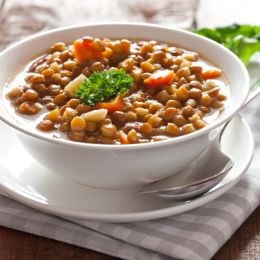5 Quick and Easy Marinades for Delicious Meals
You don’t have to stick to bland foods to eat well. Add flavor fast with healthy DIY marinades.

Your go-to marinade may be bottled Italian dressing or lemon pepper seasoning, but where’s the fun in that?
Skip readymade products in favor of homemade mixes to customize flavors and save calories too, says Sara Haas, R.D., a dietitian and chef in Chicago. “Marinades are easy to make and can typically be formulated with things that people already have on hand in their kitchens.” They boost flavor, add moisture, and make naturally bland foods like tofu and chicken taste better, she says.
Use this simple guide to get started.
Step 1: Choose Your Base
A marinade is only as good as its carrier. Use:
- Light flavors like lemon zest and olive oil for chicken, fish, and vegetables
- Robust ingredients like low-sodium soy sauce, garlic, and black pepper for beef
Step 2: Make Your Mix
A basic marinade is 2 parts oil + 1 part acid (you can replace up to half the oil with water or low-sodium broth, if you prefer). “The amount of oil can be scary to people who want to lose weight, but keep in mind that a good amount of the oil will not be absorbed by the item that is being marinated,” Haas says.
Generally, you’ll want to use ⅓ to ½ cup of marinade per pound of food. Haas suggests these basic mixes.
Balsamic Marinade
Best for vegetables and tofu.
¼ cup olive oil
¼ cup balsamic vinegar
1 teaspoon Dijon mustard
½ teaspoon freshly ground black pepper
1 teaspoon dried oregano leaves
Rosemary Marinade
Best for chicken and shrimp.
½ cup olive oil
¼ cup fresh lemon juice
2 cloves garlic, minced
2 tablespoons fresh rosemary leaves
Salt and freshly ground black pepper
Yogurt Marinade
Best for chicken and lamb.
½ cup plain low-fat yogurt
3 tablespoons olive oil
2 cloves garlic, minced
½ lemon, zested and juiced
½ teaspoon freshly ground black pepper
Tangy Marinade
Best for beef.
Subscribe to our newsletter
It's quick and easy. You could be one of the 13 million people who are eligible.
Already a member? Click to discover our 15,000+ participating locations.
Follow Us
2 tablespoons low-sodium soy sauce
2 tablespoons fresh lime juice
1 teaspoon brown sugar
½ cup olive oil
2 cloves garlic, minced
½ teaspoon freshly ground black pepper
Optional: If you prefer some spice, add a splash of sriracha or sambal oelek.
Make Your Own Marinade!
Inventing your own mix? Start with oil and acid, then add aromatics for flavor. Get creative with these ideas.
- Oils: Olive oil, grapeseed oil, and flavor-infused oils. Use lighter oils such as vegetable if you’re cooking at higher temperatures, Haas says.
- Acids: Citrus juices (lemon, lime, orange) and vinegars (sherry, apple cider, rice)
- Aromatics: Herbs (thyme, dill, rosemary); vegetables (onions, garlic, shallots); citrus (lemon, orange, or lime zest); condiments (mustard, low-sodium soy sauce, sriracha); and spices (cumin, curry, cinnamon)
Step 3: Start Cooking!
Do all marinating in the fridge, and limit sugar in marinades, which causes foods to brown or burn as they cook, Haas says.
Here are approximate marinating times:
- Vegetables or tofu: 30 minutes
- Shrimp (best with shells on and deveined): 15 to 30 minutes
- Fish: 30 minutes
- Chicken and poultry: At least 2 hours
- Pork and lamb: At least 2 hours
- Beef: At least 2 hours
To help prevent burning, scrape or brush off excess sauce before cooking, or pat foods dry with a paper towel, Haas suggests. Happy marinating!




